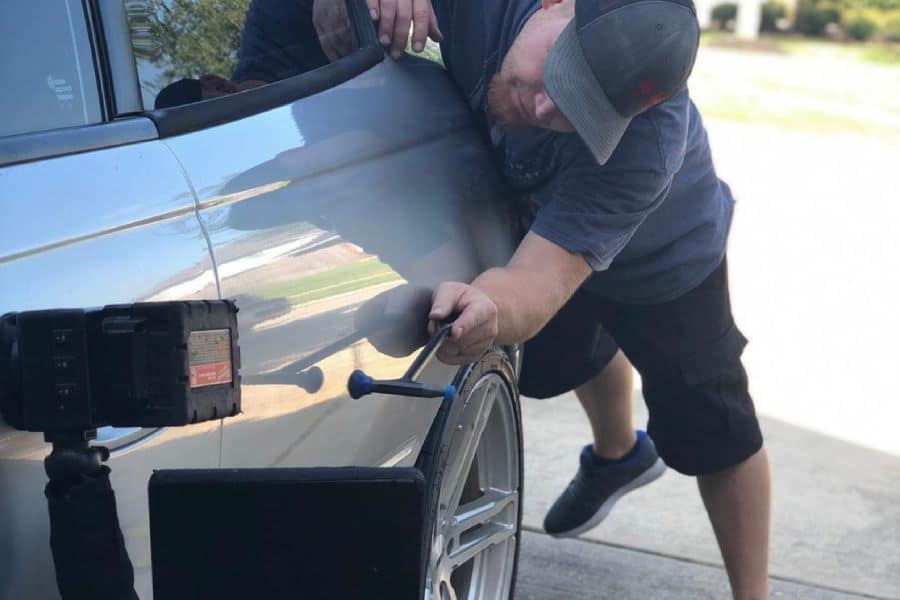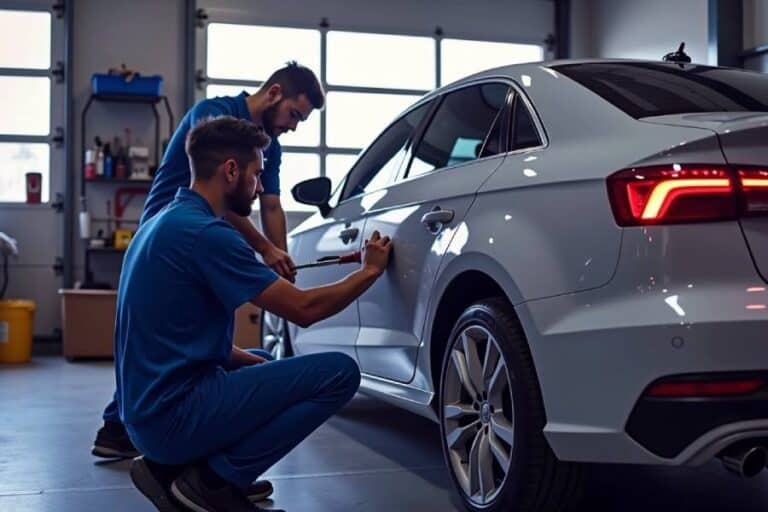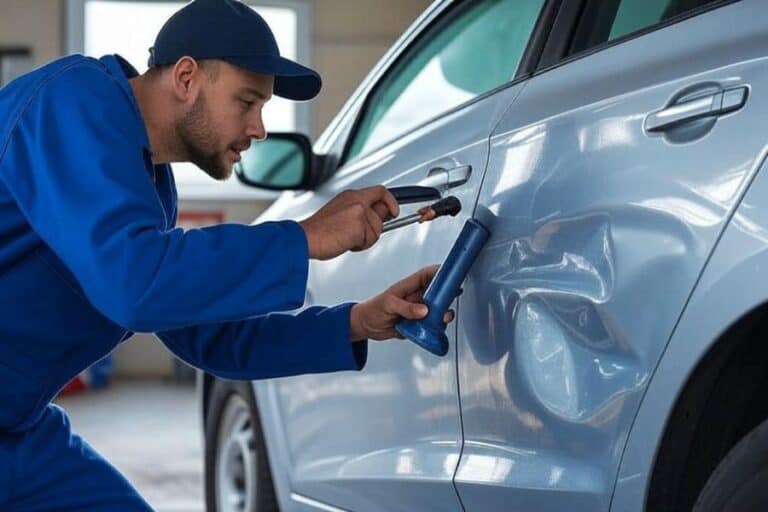Paintless Dent Repair Houston: Affordable and Professional Auto Services
When it comes to car ownership, a dent here and there can quickly become a source of frustration. Whether it’s a door ding from a crowded parking lot or the aftermath of a surprise hailstorm, these little imperfections can take away from your vehicle’s overall look. Fortunately, paintless dent repair (PDR) is an affordable and efficient solution that helps restore your car without breaking the bank or compromising its original paint finish. By using specialized techniques and tools, PDR can make those unsightly dents vanish, keeping your ride looking sharp. In this article, we’ll explore the best services available in Houston, what makes a great technician, and why PDR could be the perfect option for you.
You can find top-rated paintless dent repair services in Houston through local auto body shops or specialized mobile technicians. Ensure you check reviews and ratings to choose a reliable provider who can effectively restore your vehicle’s appearance without compromising the original paint finish.
Best Paintless Dent Repair Services in Houston
In Houston, finding a top-notch paintless dent repair service isn’t just about eliminating dents; it’s also about restoring your vehicle’s aesthetic appeal without compromising the original paint finish. Notably, localized options like Houston Dent Repair, Dent Mechanic Group, and Performance Auto Collision have earned solid reputations for their efficiency and quality. Each of these companies undertakes extensive training and utilizes state-of-the-art tools to ensure every job is executed with precision.
It’s vital to choose a specialist who knows the mechanics of PDR and understands how to maintain your vehicle’s integrity.
One crucial aspect that sets these providers apart is their commitment to customer satisfaction. They frequently receive glowing testimonials from clients who appreciate their attention to detail and expedience. For example, a satisfied customer for Houston Dent Repair remarked, “Their efficiency and attention to detail were remarkable. My car looked brand new!” This sentiment resonates with many who have used these services, reflecting the overall quality they provide.
Moreover, quick turnaround times are often cited as a hallmark of good PDR services. Customers find they can leave their vehicle in the morning and return by noon to a flawless finish. This efficiency is particularly beneficial for those relying on their cars for daily transportation. Additionally, many of these businesses offer competitive pricing, making them local favorites.
Importance of Choosing the Right Specialist
As tempting as it may be to opt for the first provider you find, taking the time to research and choose wisely pays off significantly. Not all PDR services are created equal, and this remains a critical aspect of your decision-making process. Some technicians might lack proper training or experience, leading to unsatisfactory results that can leave you with more headaches than when you started.
Therefore, looking into qualifications and customer reviews can save you both time and money in the long run. Knowing what to look for—like certifications, years of experience, and specific customer feedback—can guide you toward making an informed choice that you won’t regret.
As your search progresses, consider scheduling consultations. Quality services often welcome inquiries about techniques and experiences, which indicates their confidence in delivering high-quality work. By engaging directly with professionals at various shops, you’re likely to pick up subtle hints about their expertise as well as their approach to customer service.
This informed approach sets the stage for understanding why working with qualified specialists can further enhance your paintless dent repair experience.
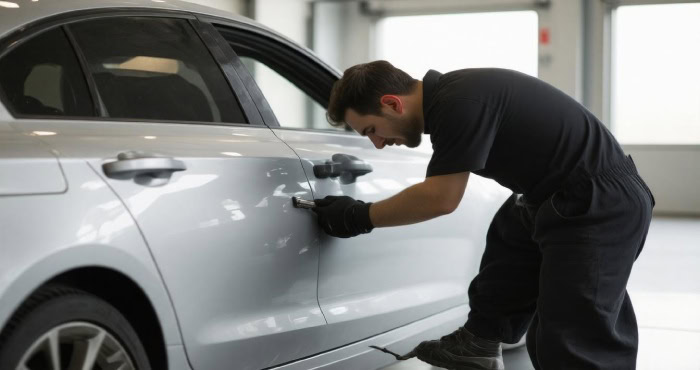
Why Choose a Specialist for PDR?
A specialist in PDR not only possesses the necessary experience and skill, but they are also well-versed in the unique techniques that preserve your vehicle’s finish during the repair process. This means they have mastered using specialized tools to manipulate the metal of your car without needing to resort to traditional methods like sanding or repainting, which can affect your vehicle’s resale value. Just think about having heart surgery; you wouldn’t trust just anyone with that responsibility, would you? A skilled heart surgeon undergoes rigorous training, and similarly, PDR specialists dedicate time to learning crafts specific to dent repair.
One major aspect that sets these professionals apart is their advanced training and certifications. Many reputable specialists have credentials from organizations like PDR Nation or the National Association of PDR Technicians. This level of dedication often results in higher standards of quality and an assurance that your car is in capable hands. It takes time to learn how to detect the best ways to manipulate various types of dents accurately, as both the type of metal and the location matter significantly in effective repairs.
“According to a 2024 industry report, specialists have a 30% higher success rate in achieving flawless repairs compared to general technicians.”
This statistic isn’t just numbers; it reflects the reality that investing in a true specialist can save you money in the long run. A poorly executed dent repair can lead not only to aesthetic issues but physical complications such as rust formation over time or structural weakness. Should a dent not be properly removed, it may very well haunt your vehicle’s surface later on when regular wear and tear causes other flaws.
The decision to engage a true PDR specialist provides not just peace of mind but also protection for your investment, allowing you to fully enjoy your vehicle without dwelling on its imperfections. With this understanding, let’s move forward to explore the detailed steps involved in paintless dent repair.
The Paintless Dent Repair Process Explained
Paintless Dent Repair (PDR) is a meticulous process, requiring specialized skills and an understanding of the vehicle’s structure.
Step-by-Step Guide
1. Assessment
The first step is assessment. During this phase, the technician closely examines the dent’s size, depth, and location on the vehicle. Different types of dents require different approaches. For instance, shallow, larger-diameter dents might be easier to assess than deep or creased ones. By evaluating these factors, the technician can formulate a specific strategy before proceeding. It’s like planning a road trip; knowing your route ensures you don’t get lost along the way.
2. Access
Once the assessment is complete, we move on to access. This step often involves removing panels or using special tools designed for easier access to hard-to-reach places. Depending on the vehicle model and dent location, this could mean removing a wheel well cover or other interior components. Gaining proper access is essential as it allows the technician to work effectively without risking damage to any surrounding structures or paint.
3. Repair
The heart of PDR lies in the repair process. Using state-of-the-art techniques such as “pushing” or “pulling,” the technician methodically massages the dent out from behind the panel. Pushing involves applying pressure from behind to coax the metal back into its original shape, while pulling may use specially designed adhesive tabs for more challenging dents. Precision is critical here; too much force can lead to further damage or distortion.
As you can imagine, this stage requires not only skill but also experience; knowing how much pressure to apply at just the right angle can make all the difference.
4. Quality Check
Finally, after repair comes the quality check—an often underestimated yet vital part of PDR. Here, every inch of the repaired area is inspected closely to ensure that no traces of the dent remain and all panels have returned to their original contours. This may involve using reflection boards or specialized lighting techniques. A successful repair should leave no signs of prior damage, ensuring your vehicle’s finish shines as if it had never been touched.
Understanding each of these steps illustrates why choosing a trained specialist for this type of repair is important—they bring not just tools but also a trained eye for detail that ensures exceptional outcomes. Let’s now explore some of the essential equipment and methodologies involved in delivering top-notch PDR services.
Tools and Techniques Used in PDR
At the heart of paintless dent repair (PDR) lies a remarkable array of specialized tools designed to address a variety of dents with precision. One essential tool is the dent rod, which comes in multiple shapes and sizes. These rods provide an accurate means of accessing hard-to-reach areas behind panels. Imagine these tools as the artist’s brushes; each one serves a unique purpose in crafting a beautifully restored vehicle.
For instance, a long, thin rod can maneuver into tight spaces, allowing for effective reformation of metal without compromising the car’s exterior.
A good technician will often have a range of dent rods on hand, choosing each one according to the dent’s depth and location to ensure they have every potential angle covered.
Complementing the dent rods, we find knockdowns. These handy tools are pivotal for finishing touches — akin to smoothing out rough edges in sculpture work. After pushing out a significant dent with a rod, minor imperfections may still need attention, including tiny waves or uneven surfaces left in the metal. Knockdowns help flatten these surfaces, providing that perfect finish to restore the car’s aesthetic integrity.
For anyone considering PDR services, it’s worth noting that while knockdowns may seem simple, their proper use requires skill and practice. An experienced technician knows just how much pressure to apply without damaging the surrounding metal.
Another vital component of PDR is the glue pulling kit. This tool set plays an essential role for dents that are challenging to access from behind the panel, such as those located on curved or complex surfaces. The glue pulling technique involves applying a special adhesive to a specific tab attached to the dent before carefully pulling it back out into shape. This method minimizes damage to the paint while allowing even the most stubborn dents to be extracted effectively.
| Tool | Purpose |
| Dent Rods | Push out dents from behind the panel |
| Knockdowns | Smooth out minor imperfections |
| Glue Pull Kits | Access dents that cannot be pushed out |
| Light Boards | Identify dents and monitor progress |
Lastly, light boards serve as a fantastic aid throughout this process. These boards illuminate the surface of the vehicle, highlighting imperfections in real-time while repairs unfold. By casting focused light across the bodywork, technicians can easily spot slight deviations or remaining dents that might not be visible otherwise. It’s similar to how a sculptor uses different lights to observe their creation from various angles — illuminating details that bring clarity and perspective.
With these tools and their specific functions clarified, we can now turn our attention to exploring the benefits they offer both technicians and vehicle owners alike.
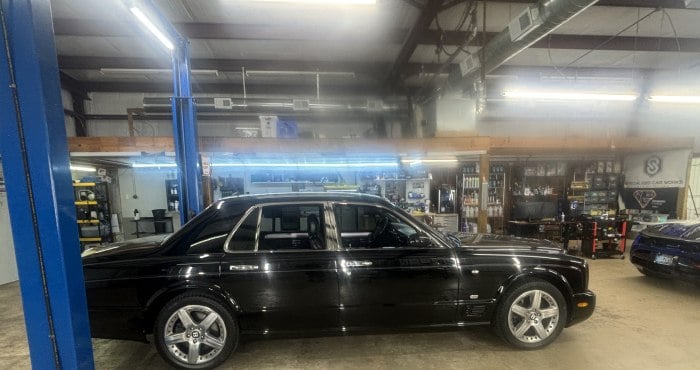
Advantages of Paintless Dent Repair
PDR presents a myriad of benefits that cater to the needs of modern car owners. One of the principal advantages is its cost-effectiveness. Traditional methods often require extensive labor and costly materials, whereas PDR minimizes both by focusing solely on removing dents without repainting or using fillers. This means that you save money without sacrificing quality.
Additionally, PDR is remarkably time-saving. Imagine a situation where a minor dent can be repaired within just a few hours, allowing you to get back on the road almost immediately. This efficiency caters well to anyone with a busy lifestyle who might not have time to wait days or weeks for repairs. According to feedback I’ve received from clients, many appreciate the quick turnarounds that PDR offers compared to traditional body shop methods.
By choosing PDR, you also preserve your vehicle’s original paint. This is crucial because maintaining the vehicle’s factory finish not only keeps it looking new but also upholds its value over time. A car that retains its original appearance usually commands a better resale price.
Furthermore, there’s an eco-friendly aspect to consider. Unlike traditional repairs that may use harmful chemicals and fillers, PDR relies on gentle manipulation of metal panels rather than invasive techniques that harm the environment. By opting for PDR, you’re making a conscious choice that supports sustainability while caring for your vehicle.
Statistics are often enlightening in these discussions. A survey conducted by the PDR Association revealed that 85% of car owners reported satisfaction with both the cost savings and results achieved through paintless dent repair. This evidence speaks volumes about the positive impact PDR can have on car maintenance choices.
With such considerable advantages in mind, it’s helpful to explore what you should anticipate regarding pricing and specifics associated with this service in Houston.
Cost of Paintless Dent Repair in Houston
The cost of PDR can fluctuate widely depending on several key factors, including the size, depth, and location of the dent on your vehicle. For instance, a small ding from a car door might only cost between $75 to $150 for repair, while larger or more intricate dents—such as those caused by hail damage or significant impacts—can lead to repair costs soaring to $500 or more.
Various industry surveys suggest that the average price for a single dent repair typically ranges within this $75 to $150 bracket. However, keep in mind that every auto body shop may have different pricing structures based on their experience and service quality. It’s wise to get multiple quotes before proceeding with a repair.
Many customers overlook the added benefit of scheduling appointments for multiple dents. Not only does it often lead to discounts that can significantly reduce your total bill, but it also saves time by addressing several issues in one visit.
As you consider repair options, don’t forget equipment and labor costs can also affect the overall expense.
It’s important to note that labor rates may vary across different localities within Houston and the surrounding areas. High-demand shops located in prime locations may charge more simply due to overheads associated with their operations. Conversely, smaller or mobile services might offer competitive prices without sacrificing quality. Regardless of where you go, the skills and expertise of the technician performing the repair will ultimately play a significant role in the cost as well.
Lastly, although saving money by opting for lower-priced services may seem enticing, remember that quality should take precedence. Cheaper options might cut corners, potentially leading to less satisfactory results and later repairs, which could turn into costly mistakes down the line. Investing in experienced professionals can save you both hassle and money in the long run.
With a clearer picture of costs and considerations in mind, it’s essential to explore how different kinds of damage can impact both pricing and repair techniques used.
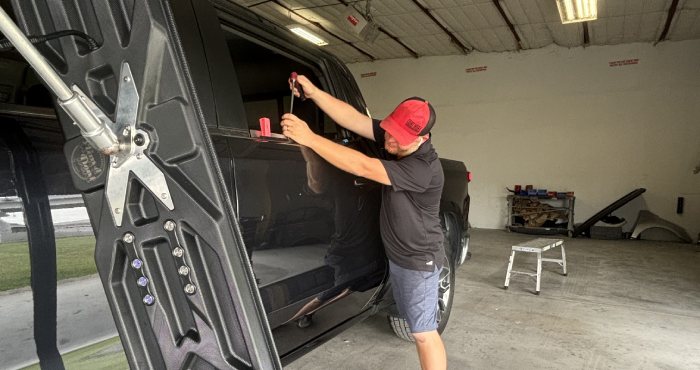
Types of Damage Fixed by PDR
Paintless Dent Repair is a remarkable method tailored to address a breadth of automotive aesthetic issues, enabling vehicle owners to restore their cars to pristine condition without the need for traditional, often costly repairs. This technique primarily deals with minor surface imperfections that don’t severely compromise the paint, making it ideal for various types of damage that occur during daily life.
Door Dings
One common type of damage PDR effectively tackles is door dings. These small, localized dents typically arise when a car door swings open too forcefully or collides slightly with another vehicle or object. They may appear insignificant at first; however, these dings can detract from your vehicle’s overall appearance. Thankfully, PDR uses specialized tools to massage the metal back to its original shape without affecting the paint job.
Hail Damage
Another frequent adversary of car exteriors is hail damage. This occurs when multiple small dents scatter across a vehicle’s surface due to hailstones raining down during a storm. While it can seem overwhelming at first, PDR is adept at gently pushing these dents out without the need for repainting. The process preserves the integrity of the original finish and saves you from incurring added expenses associated with conventional bodywork.
Shopping Cart Bumps
Then there are those unfortunate shopping cart bumps, which usually leave a shallow dent on car doors or fenders when an unattended cart rolls into a parked vehicle. It’s a common scenario, yet one that’s infuriating for many drivers. Fortunately, PDR is highly effective at resolving this issue as well by manipulating the underlying metal to bring it back to an almost flawless state.
While PDR shines in handling these types of damage, it isn’t universally applicable. Severe dents accompanied by cracked or chipped paint require traditional repair methods. This distinction ensures that your vehicle will be properly restored and retains its value longer.
If you’re facing any of these dent situations, opting for PDR could save you both time and money while keeping your car looking great. The next step involves identifying a skilled specialist who truly understands this nuanced repair technique for optimal results.
Finding the Right PDR Specialist in Houston
Start by conducting thorough research into potential specialists. Online reviews are invaluable; sites like Google, Yelp, and even social media provide insights from real customers who have experienced the service firsthand. Take note of comments about the quality of work, customer service, and professionalism. If friends or family have had positive experiences, don’t hesitate to ask for their recommendations—word of mouth can often lead you to the best options available in Houston.
Certification matters. Look for specialists who hold credentials from reputable organizations, such as the National Association of PDR Technicians. This affiliation can signify a commitment to excellence and adherence to industry standards, translating to better results for your vehicle. A certified technician is generally more trustworthy and knowledgeable about the latest techniques and technologies in paintless dent repair.
Experience cannot be overlooked either. When you speak with potential specialists, inquire about their portfolios, specifically asking about projects similar to your own vehicle’s dents. A seasoned specialist will not only have examples of previous work but will also describe how they approached different types of damage. This understanding of their methodology can provide insights into their problem-solving skills and adaptability.
To make your search even easier, visit our website, where we’ve curated a list of the top PDR specialists in Houston. You’ll find detailed profiles, customer reviews, and exclusive discounts tailored for our readers.
Ensuring that you take these steps will help guarantee that your car receives the meticulous care it deserves while keeping costs manageable.
In summary, taking the time to identify qualified professionals can dramatically enhance your experience with paintless dent repair in Houston. Always prioritize certification and experience to ensure superior service for your vehicle.
Where can I find reliable paintless dent repair services in Houston?
You can find reliable paintless dent repair services in Houston by checking local directories, online reviews, and customer testimonials. Look for shops that have been in business for several years and boast a high satisfaction rate; studies show that 85% of customers prefer service providers with positive feedback. Additionally, consider reaching out to the Better Business Bureau for accredited businesses in your area – this ensures professional standards and reliable service in handling your vehicle’s dents affordably.
How long does the paintless dent repair process usually take?
The paintless dent repair process typically takes anywhere from 30 minutes to a few hours, depending on the size and complexity of the dent. Most minor dents can be fixed quickly, often allowing you to have your vehicle back the same day. Studies show that over 80% of simple dents can be removed efficiently within this time frame, making it an ideal choice for those looking for speedy and effective auto services in Houston.
What are the advantages of using paintless dent repair over traditional bodywork?
The advantages of using paintless dent repair (PDR) over traditional bodywork include cost-effectiveness, time efficiency, and preservation of the vehicle’s original finish. PDR typically costs 30-50% less than conventional repairs and can often be completed within a few hours instead of days. Additionally, since PDR does not involve repainting, it helps maintain the vehicle’s resale value—paint quality and color match remain intact—making it an attractive choice for car owners.
How much does paintless dent repair typically cost in Houston?
The cost of paintless dent repair in Houston typically ranges from $75 to $250 per dent, depending on factors such as the size, location, and severity of the damage. According to industry estimates, most minor dents can be repaired for about $100 to $150, making it a cost-effective option compared to traditional methods that often involve repainting and result in higher expenses. This approach not only saves money but also preserves the vehicle’s original finish.
Can all types of dents be repaired using paintless dent repair techniques?
While paintless dent repair (PDR) is highly effective for most types of minor dents, such as those caused by hail or door dings, it may not be suitable for all situations. Dents that have sharp creases, are located near the edges of panels, or involve paint damage cannot typically be repaired using PDR techniques. According to industry estimates, around 70-80% of small to medium-sized dents can be successfully addressed with PDR, making it a popular choice for cost-effective and professional auto services in Houston.

